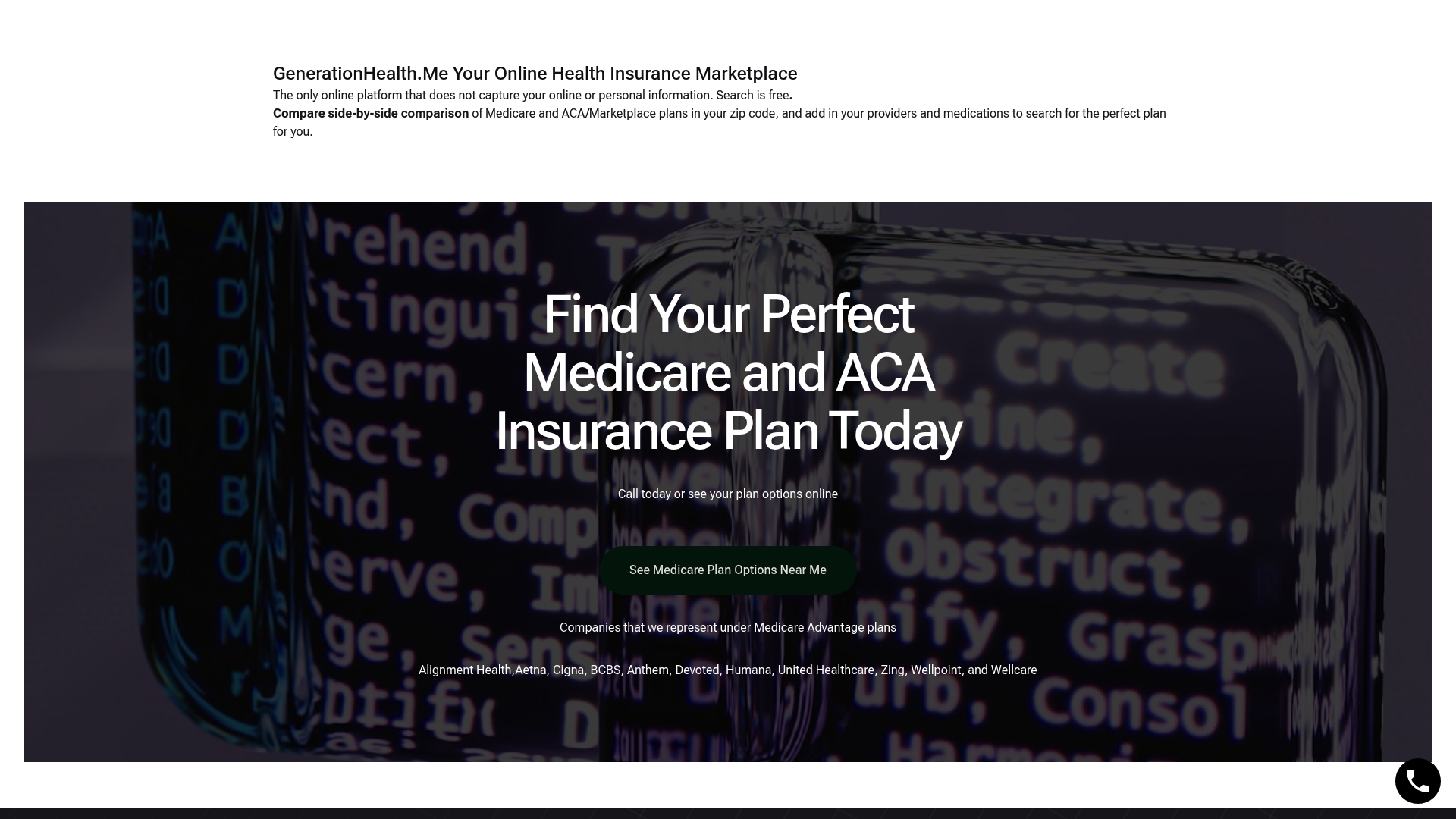Over 65 million Americans rely on Medicare for their healthcare needs, yet many feel confused by its different parts and rules. Deciphering how Medicare really works matters because your choices can shape your health coverage and finances for years. With the right understanding of Medicare’s structure, you can avoid costly mistakes, choose better plan options, and make every benefit work for you.
Key Takeaways
| Point | Details |
|---|---|
| Understanding Medicare Parts | Medicare consists of four main parts: A (hospital insurance), B (medical insurance), C (Medicare Advantage), and D (prescription drug coverage), each with distinct benefits and costs. |
| Enrollment Periods | Timing is crucial for Medicare enrollment to avoid penalties; note the Initial Enrollment, General Enrollment, and Special Enrollment periods. |
| Cost Management | Medicare costs vary based on parts selected and can incur penalties for late enrollment, emphasizing the need for proactive financial planning. |
| Personalized Plan Choice | Choosing the right Medicare plan involves considering individual healthcare needs, financial situation, and potential additional benefits offered by different plans. |
Table of Contents
- Understanding The Core Medicare Structure
- Comparing Medicare Part A, B, C, And D
- Eligibility, Enrollment, And Coverage Periods
- Medicare Costs, Premiums, And Penalties
- Choosing The Right Medicare Plan Option
- Common Mistakes And How To Avoid Them
Understanding the Core Medicare Structure
Navigating Medicare can feel like decoding a complex puzzle, but understanding its core structure doesn’t have to be overwhelming. Medicare is a federal health insurance program primarily designed for individuals 65 and older, offering comprehensive coverage through four distinct parts that address different healthcare needs.
At its foundation, Medicare consists of four primary components:
- Part A: Hospital Insurance
- Covers inpatient hospital stays
- Provides coverage for skilled nursing facility care
- Includes some home health care services
- Typically premium-free for those who paid Medicare taxes during their working years
- Part B: Medical Insurance
- Covers outpatient medical services
- Includes doctor visits and preventive care
- Covers durable medical equipment
- Requires a monthly premium and shared costs
Beyond these foundational parts, Medicare offers additional options to enhance your healthcare coverage. Learn more about supplemental Medicare options to find the right fit for your individual health needs.
The complexity of Medicare reflects its mission to provide comprehensive healthcare support. While Parts A and B cover primary medical services, many beneficiaries choose to explore additional coverage through Medicare Advantage (Part C) or prescription drug plans (Part D) to create a more robust healthcare safety net tailored to their specific health requirements.
Comparing Medicare Part A, B, C, and D
Understanding the nuances of Medicare’s four parts can help you make informed healthcare decisions. Each part serves a unique purpose, offering comprehensive coverage that addresses different medical needs and financial considerations.
Cost and Coverage Breakdown
Here’s a comparison of the four main Medicare parts:
| Medicare Part | Type of Coverage | Key Benefits | Typical Costs |
|---|---|---|---|
| Part A | Hospital Insurance | Inpatient care Skilled nursing Some home health | Premium-free for most $1,676 deductible Coinsurance after 60 days |
| Part B | Medical Insurance | Outpatient services Doctor visits Preventive care Medical equipment | $185/month premium $257 deductible 20% coinsurance |
| Part C | Medicare Advantage | Bundles A & B Often includes Part D Extra benefits (dental, vision) | $17 avg. monthly premium in 2025 Varying copays |
| Part D | Prescription Drug Coverage | Prescription medications | Varies by plan $2,000 out-of-pocket cap (2025) |
Part A (Hospital Insurance)
- Covers inpatient hospital stays
- Includes skilled nursing facility care
- Standard deductible of $1,676 per benefit period
- Coinsurance costs increase after 60 days of hospitalization
- Often premium-free for those with prior Medicare tax contributions
Part B (Medical Insurance)
- Covers outpatient services and medical equipment
- Includes doctor visits and preventive care
- Standard 20% coinsurance after meeting annual deductible
- Monthly premiums with potential income-related surcharges
Part C (Medicare Advantage)
- Private insurance plans bundling Parts A, B, and often Part D
- Average monthly premiums around $17 in 2025
- Offers alternative to traditional Medicare structure
- Provides additional benefits beyond original Medicare coverage
Explore the differences between Original Medicare and Medicare Advantage to find the most suitable option for your healthcare needs.
Part D (Prescription Drug Coverage)
- Standalone prescription medication insurance
- Private insurance plans with varying premiums
- $2,000 out-of-pocket cap implemented in 2025
- Helps manage prescription medication costs
Choosing the right Medicare parts depends on your individual health requirements, budget, and preferred healthcare providers.
 Carefully evaluating each part’s coverage and costs will help you create a comprehensive healthcare strategy that protects your well-being and financial stability.
Carefully evaluating each part’s coverage and costs will help you create a comprehensive healthcare strategy that protects your well-being and financial stability.
![]()
Eligibility, Enrollment, and Coverage Periods
Medicare enrollment is a nuanced process with specific timelines and conditions that can significantly impact your healthcare coverage. Understanding these windows is crucial to ensuring seamless access to medical services and avoiding potential penalties.
Enrollment Periods Explained
Initial Enrollment Period
- Begins 3 months before your 65th birthday
- Continues through your birthday month
- Extends 3 months after birthday month
- Ideal time to sign up without facing late enrollment penalties
General Enrollment Periods
- Runs from January 1 to March 31 annually
- For individuals who missed their initial enrollment window
- Coverage begins July 1 of the same year
- Potential late enrollment penalties may apply
Special Enrollment Periods
- Available for specific life circumstances such as:
- Continuing work beyond 65
- Volunteering abroad
- TRICARE beneficiaries
- Experiencing emergency situations
- Receiving incorrect information from employers
Learn more about Medicare eligibility requirements to ensure you don’t miss critical enrollment opportunities.
For Part D prescription drug coverage, additional rules apply. You must have either Part A or Part B and reside in the plan’s service area. Enrollment is restricted to specific election periods, including Initial Enrollment, Annual Election Period, and Special Election Periods, each governed by strict Centers for Medicare & Medicaid Services (CMS) guidelines.
Navigation is key. Missing these enrollment windows can result in coverage gaps and potential financial penalties, making it essential to plan ahead and understand your unique eligibility timeline.
Medicare Costs, Premiums, and Penalties
Navigating Medicare’s financial landscape requires understanding the complex web of premiums, deductibles, and potential penalties that can significantly impact your healthcare budget. Medicare costs are not one-size-fits-all and can vary dramatically based on your work history, income, and enrollment choices.
Premium and Deductible Breakdown
Part A Costs
- Standard inpatient hospital deductible: $1,676 per benefit period
- Coinsurance increases based on length of hospital stay
- Premium-free for most beneficiaries with sufficient work credits
- Buy-in premiums range:
- $285 for 30-39 work credits
- $518 for fewer than 30 work credits
Part B Expenses
- Monthly standard premium: $185
- Annual deductible: $257
- Income-Related Monthly Adjustment Amount (IRMAA) can increase premiums
- Potential surcharges up to $628.90 for high-income beneficiaries
Learn how to maximize your Medicare coverage and minimize costs and avoid unnecessary financial burdens.
Enrollment Penalties to Avoid
Missing critical enrollment windows can result in lifelong financial consequences:
- Part D prescription coverage penalties:
- 1% of national base beneficiary premium for each month without coverage
- Calculated and added to your monthly premium permanently
- Late enrollment in Part B triggers ongoing financial penalties
- IRMAA surcharges for Part D can add up to $85.80 for high-income individuals
Careful planning and timely enrollment are your best strategies for managing Medicare costs. Understanding these nuanced financial aspects can save you thousands of dollars in unnecessary expenses over your healthcare journey.
Choosing the Right Medicare Plan Option
Selecting the ideal Medicare plan is like navigating a complex healthcare maze – one size definitely does not fit all. Your individual healthcare needs, budget, and personal preferences will determine the most suitable coverage strategy for your unique situation.
Plan Comparison Strategies
Original Medicare (Parts A & B)
- Provides standard federal health coverage
- Offers flexibility in choosing healthcare providers
- Allows supplemental Medigap policies
- Recommended for individuals wanting broader provider networks
Medicare Advantage (Part C)
- Private insurance alternative to Original Medicare
- Often includes prescription drug coverage
- May offer additional benefits like dental and vision
- Typically has network restrictions
- Lower out-of-pocket costs for some beneficiaries
Explore comprehensive Medicare Advantage options to find the perfect plan tailored to your healthcare requirements.
Critical Considerations for 2025-2026
Recent trends indicate potential shifts in Medicare Advantage offerings, making careful plan selection more important than ever. Key factors to evaluate include:
- Provider network compatibility
- Prescription drug coverage
- Additional supplemental benefits
- Out-of-pocket maximum costs
- Potential plan exits or changes
Additional resources like Medicare’s Plan Finder and State Health Insurance Assistance Programs can provide invaluable guidance in making an informed decision. Remember, the cheapest plan isn’t always the best – focus on comprehensive coverage that matches your specific health needs and financial situation.
Common Mistakes and How to Avoid Them
Navigating Medicare can feel like walking through a minefield of potential costly errors. Medicare enrollment is complex, and a single misstep can lead to lifelong financial penalties or gaps in critical healthcare coverage that could leave you vulnerable when you need medical support most.
Critical Enrollment Pitfalls
Missed Enrollment Windows
- Annual Election Period: October 15–December 7
- Medicare Advantage Open Enrollment: January 1–March 31
- Initial Enrollment Period around your 65th birthday
- Missing these deadlines can result in:
- Coverage loss
- Permanent financial penalties
- Delayed healthcare access
Part D Prescription Coverage Risks
- Lifetime penalty for late enrollment
- 1% increase in premium for every month without coverage
- Calculated based on national base beneficiary premium
- Penalties compound permanently
Learn how to navigate Medicare enrollment periods effectively and protect yourself from unexpected financial burdens.
Proactive Prevention Strategies
Avoid common Medicare mistakes by:
- Marking enrollment deadlines on your calendar
- Maintaining continuous creditable drug coverage
- Reviewing your healthcare needs annually
- Comparing plan options systematically
- Consulting State Health Insurance Assistance Programs
Remember, Medicare isn’t just paperwork – it’s your healthcare safety net. One overlooked detail can cost you thousands in penalties and potentially compromise your medical care. Stay informed, plan ahead, and don’t hesitate to seek professional guidance when uncertainty strikes.
Make Medicare Simple: Take Control of Your Coverage Today
Feeling uncertain about which Medicare part is right for you? Confused by enrollment periods, penalties, or the differences between Part A, B, C, and D? You are not alone. Many readers like you worry about costly missteps, missed deadlines, and confusing terminology. That is why GenerationHealth.me exists—to provide clarity, practical advice, and up-to-date comparisons, helping you cut through the complexity and avoid expensive mistakes.

Ready to stop stressing over your healthcare choices? Visit our Understanding Medicare vs Marketplace resources for tools that break down your options, or check your Medicare Eligibility with our step-by-step guidance. Get instant quotes and one-on-one support at GenerationHealth.me to secure the Medicare coverage that protects you now—and in the future. Do not put off your peace of mind—take the first step today.
Recommended
- 7 Key Benefits of Medicare Advantage Plans –
- How to Maximize Medicare Coverage for Optimal Health –
- Overview of Medicare Coverage and, Links to quote tools –
- understanding medicare vs marketplace Archives –
- 3 Proven Strategies to Improve Medicare Ratings | VectorCare
- Understanding Medicare Non-Emergency Transportation
About the Author
Robert Simm is a licensed health insurance broker and founder of GenerationHealth.me, helping seniors and families navigate Medicare, Marketplace, and supplemental coverage with clarity and confidence. With years of experience in ACA and Medicare education, Robert simplifies complex enrollment decisions into practical, trusted guidance you can act on.